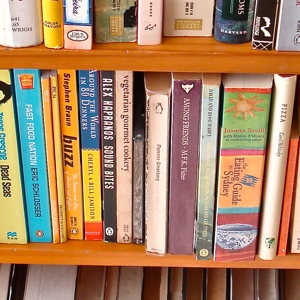A new report from North Carolina State University holds shocking news for me! It seems that many cook books on the shelves these days give bad or faulty advice on Kitchen Safety. I guess I wasn’t aware of this new and troubling trend because I read very few Cookbooks these days…
 Proper and safe food handling rules can be applied to any cookbook you might care to peruse. Use common sense. Wash your hands. And check out my Basic Kitchen Safety
Proper and safe food handling rules can be applied to any cookbook you might care to peruse. Use common sense. Wash your hands. And check out my Basic Kitchen Safety
post series by searching ‘Kitchen Safety’ on this site.
Researchers at NC State say they looked at 1,429 recipes from 29 popular cookbooks. The cookbooks were all from the New York Times Best Seller’s List. All the recipes involved the handling of raw Meat, Poultry, Seafood or Eggs. Here’s the boil-down of what they found:
“Only 89 out of 1,497 recipes gave readers reliable information that they could use to reduce their risk of foodborne illness,” says Ben Chapman, senior author of the report. And 34 recipes gave readers recommendations and information what was patently unsafe!
Yikes!
How did Chapman and his crew evaluate the recipes?
They looked at three issues…
- Does the recipe tell readers to cook the dish to a specific internal temperature?
- If it does include a temperature, is that temperature one that has been shown to be “safe”? For example, cooking chicken to 165°F.
- Does the recipe perpetuate food-safety myths — such as saying to cook poultry until the juices “run clear” — that have been proven unreliable as ways of determining if the dish has reached a safe temperature?
Chapman also notes that 99.7 per cent of all the recipes gave vague, subjective information, such as “cook until done”, or gave cooking times that might not be correct for meat cuts or Poultry of different sizes.
And here’s the corker…
Chapman says the problem is a serious one, because cooks – especially novice ones – consider Cook Books the authority on Food and Food Safety issues. But making headway on the problem might be tough…
“Ideally, cookbooks can help us make food tasty and reduce our risk of getting sick, so we’d like to see recipes include good endpoint cooking temperatures,” Chapman says. “A similar study was done 25 years ago and found similar results – so nothing has changed in the past quarter century. But by talking about these new results, we’re hoping to encourage that change.”
Now you know. Let’s get talking about it!
You can started by reviewing my Basic Kitchen Safety post series under the Category ‘Cooking 101‘
~ Maggie J.

